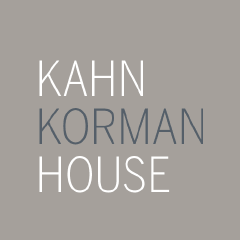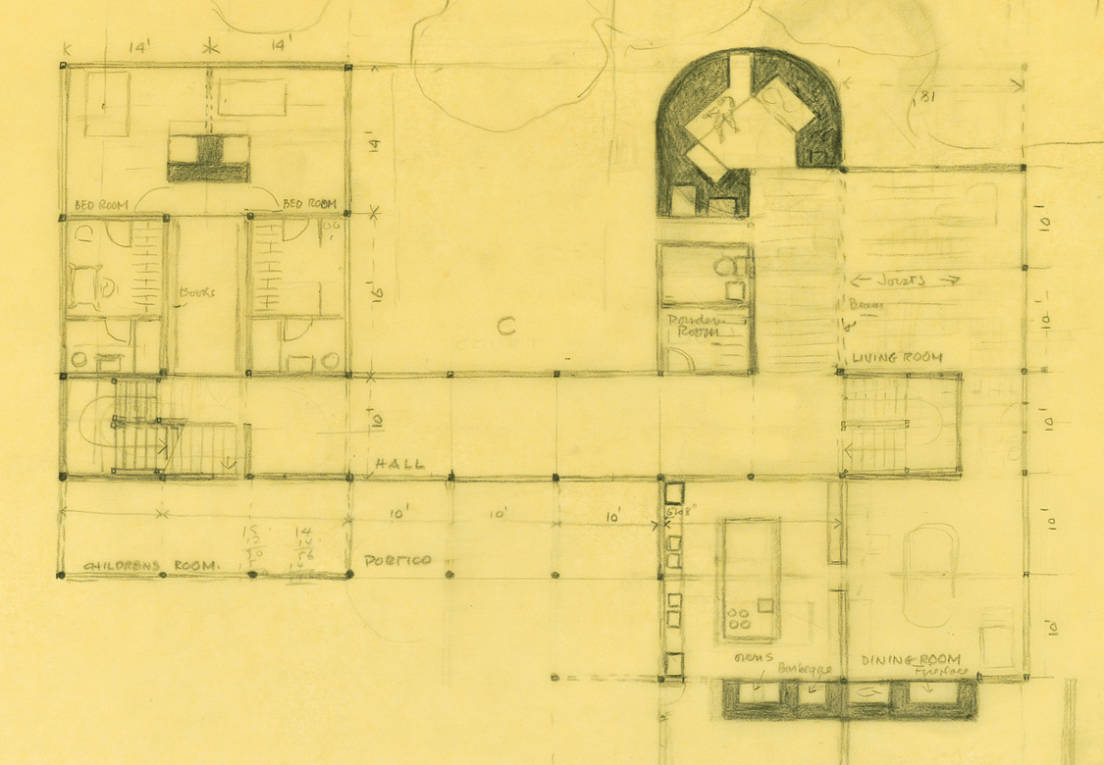
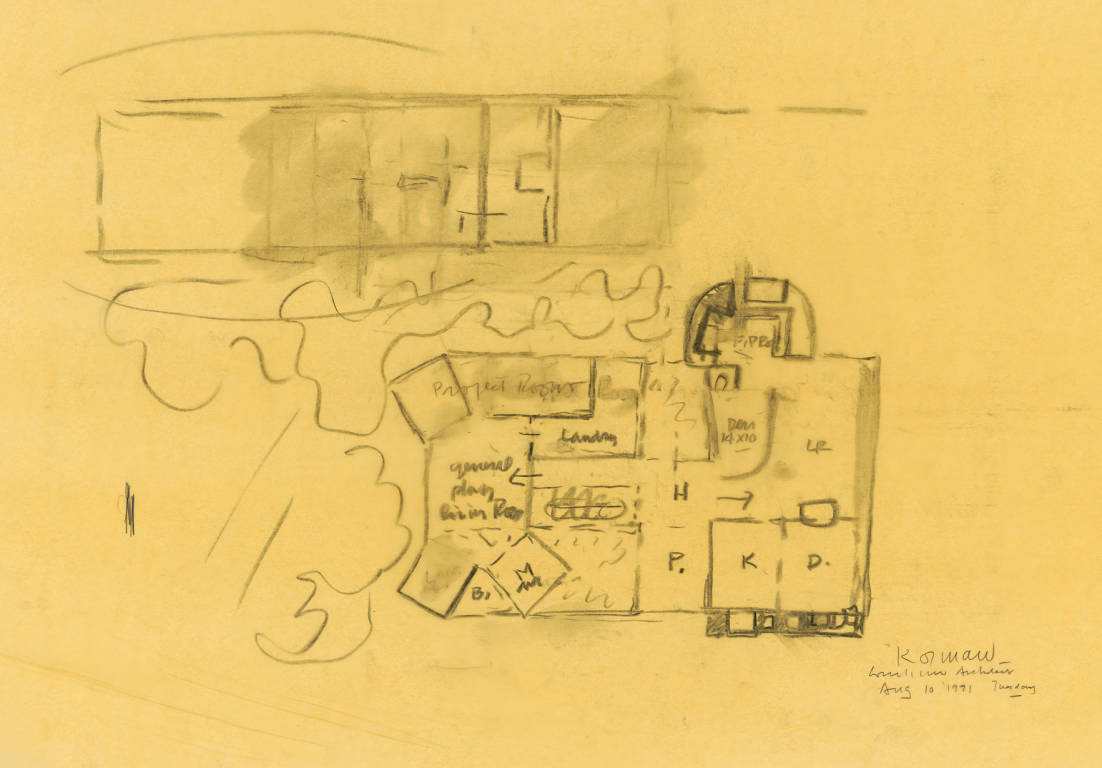
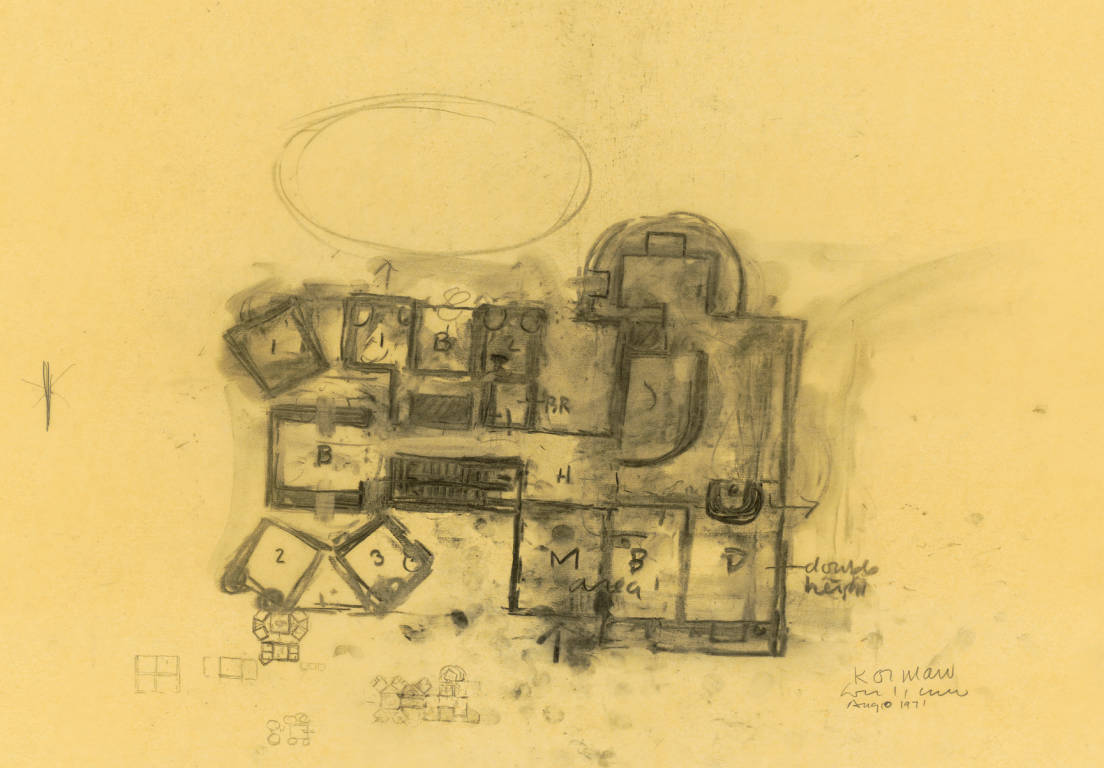
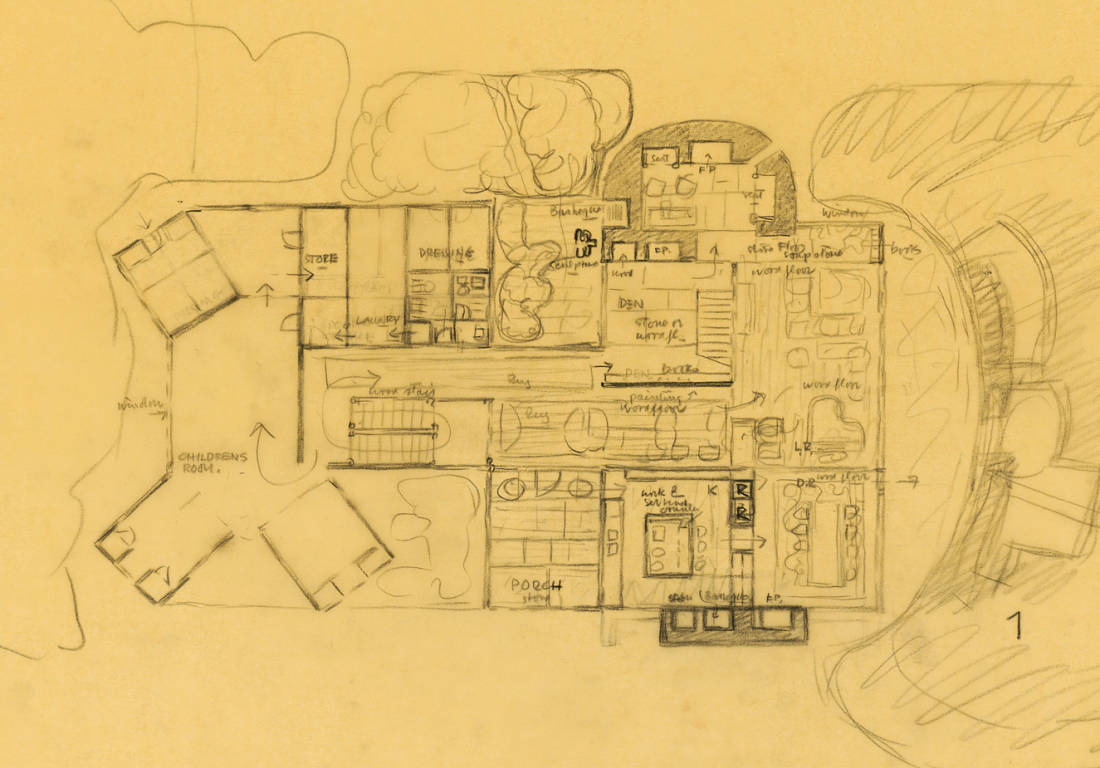
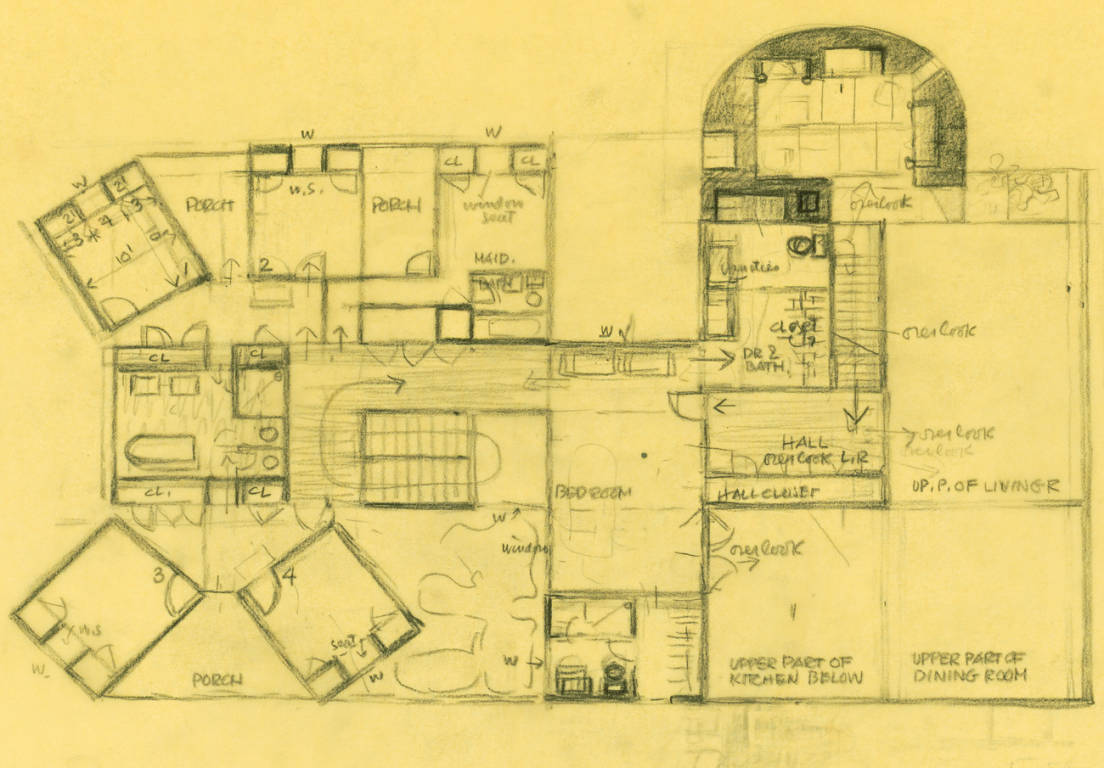
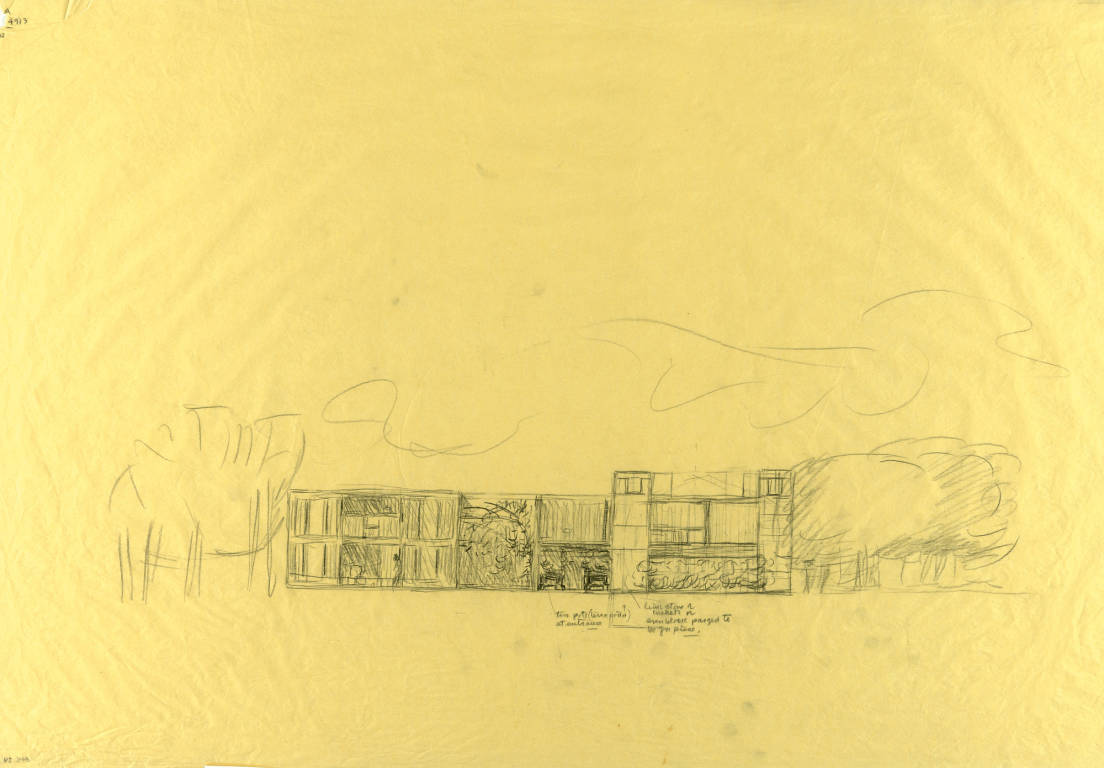
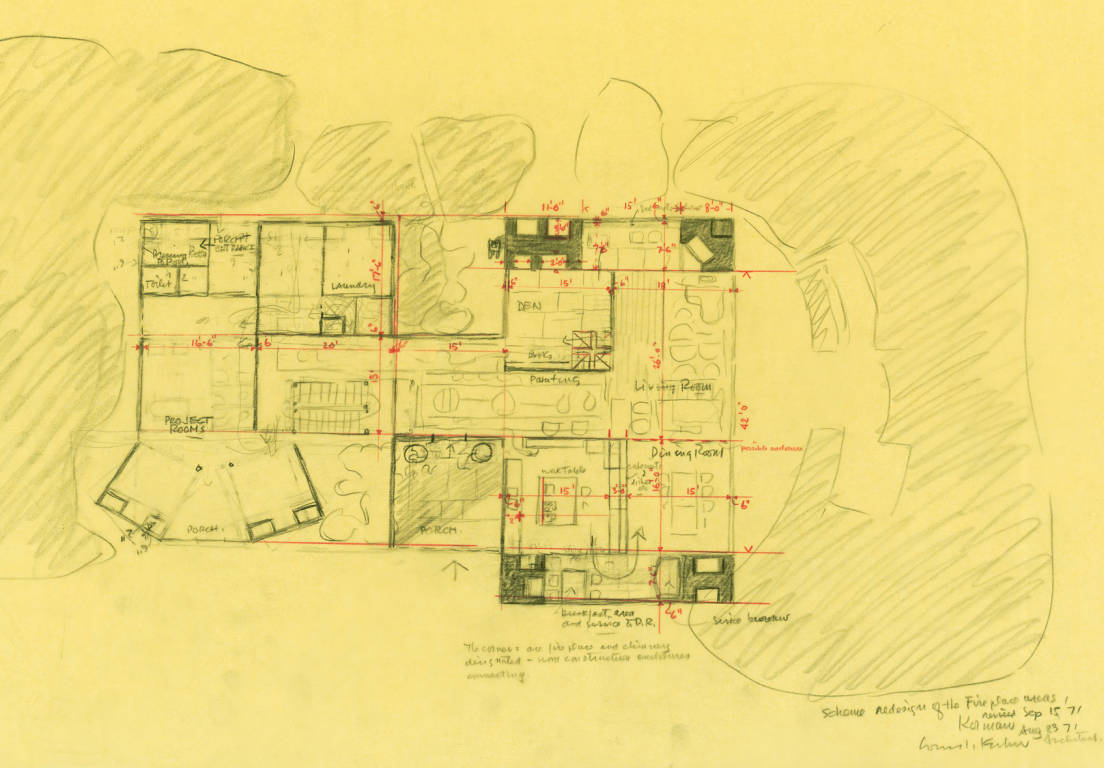
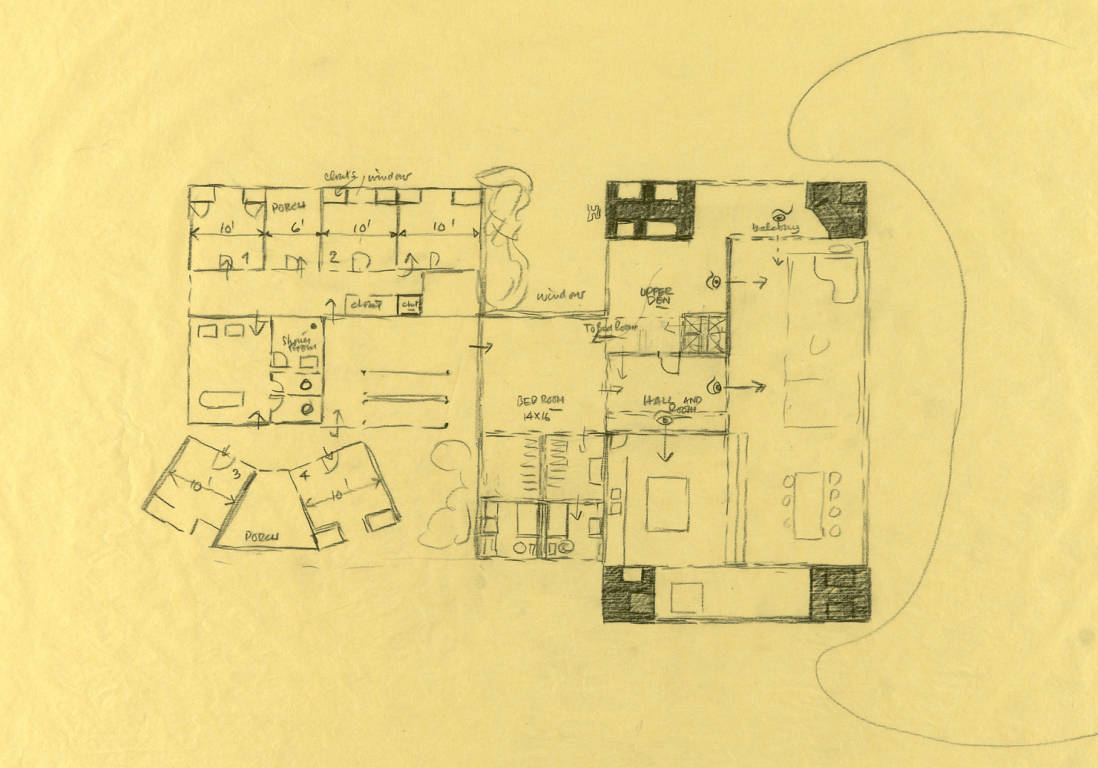
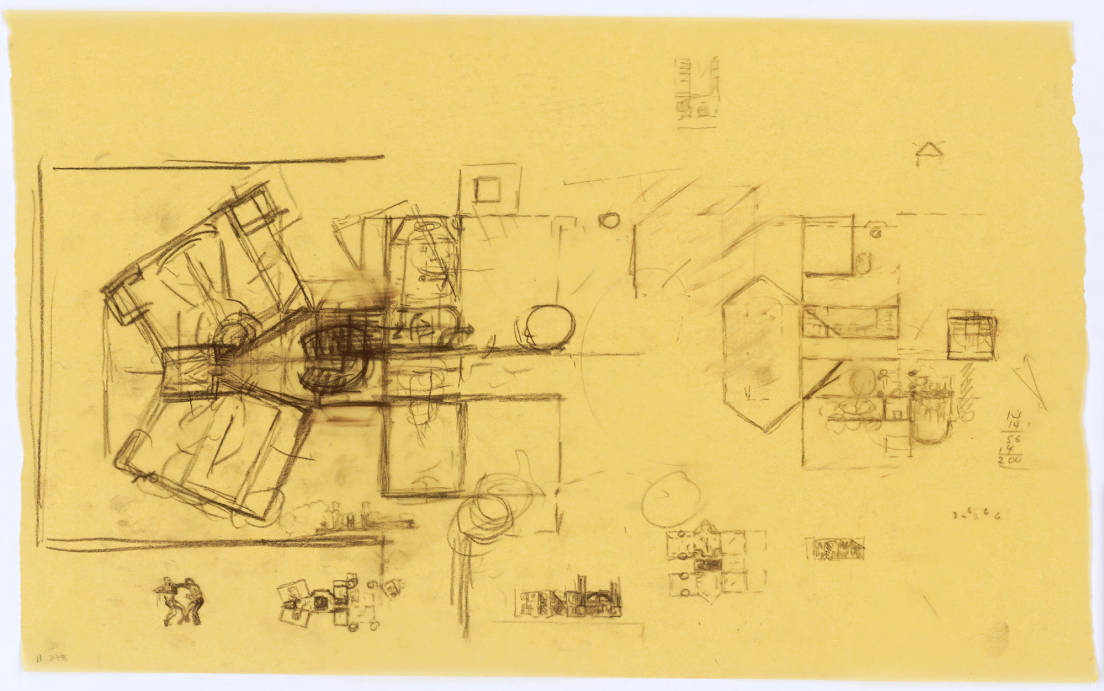
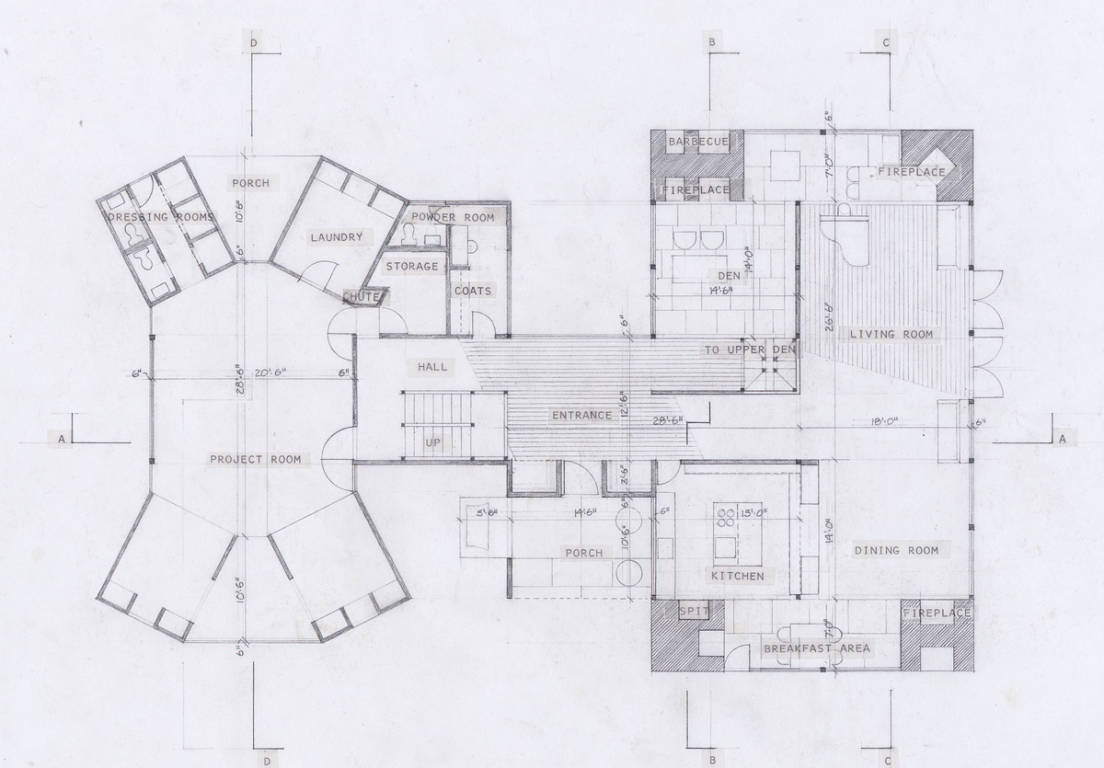
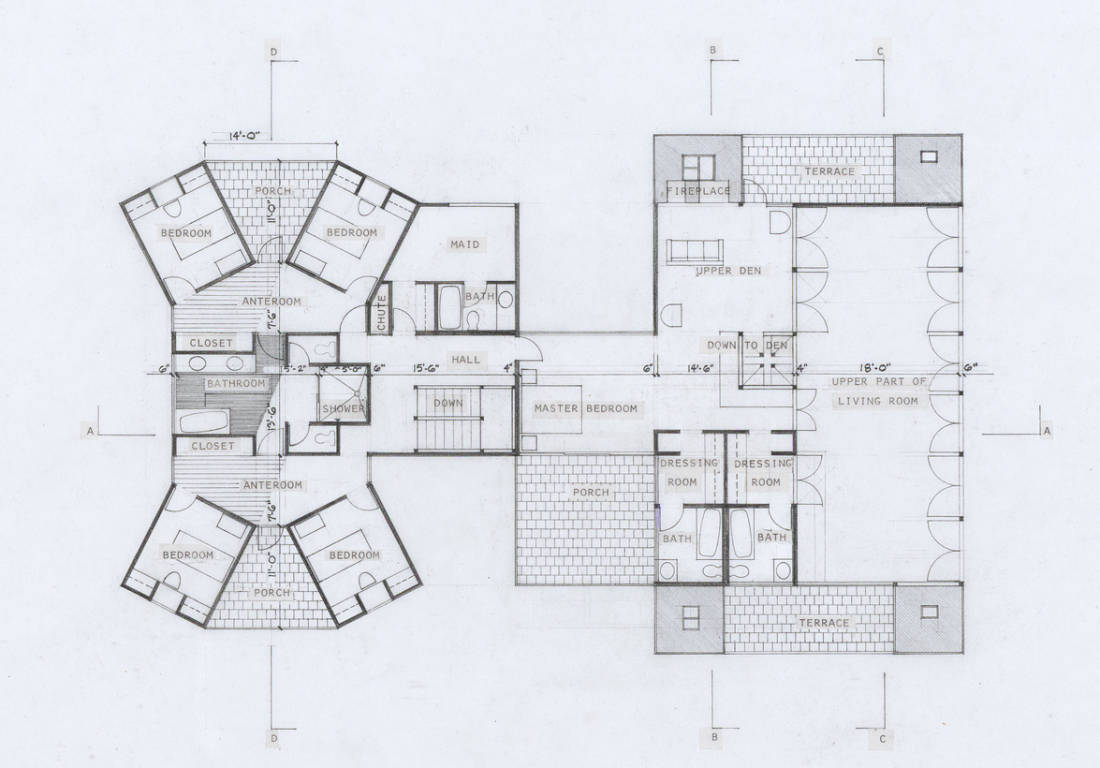
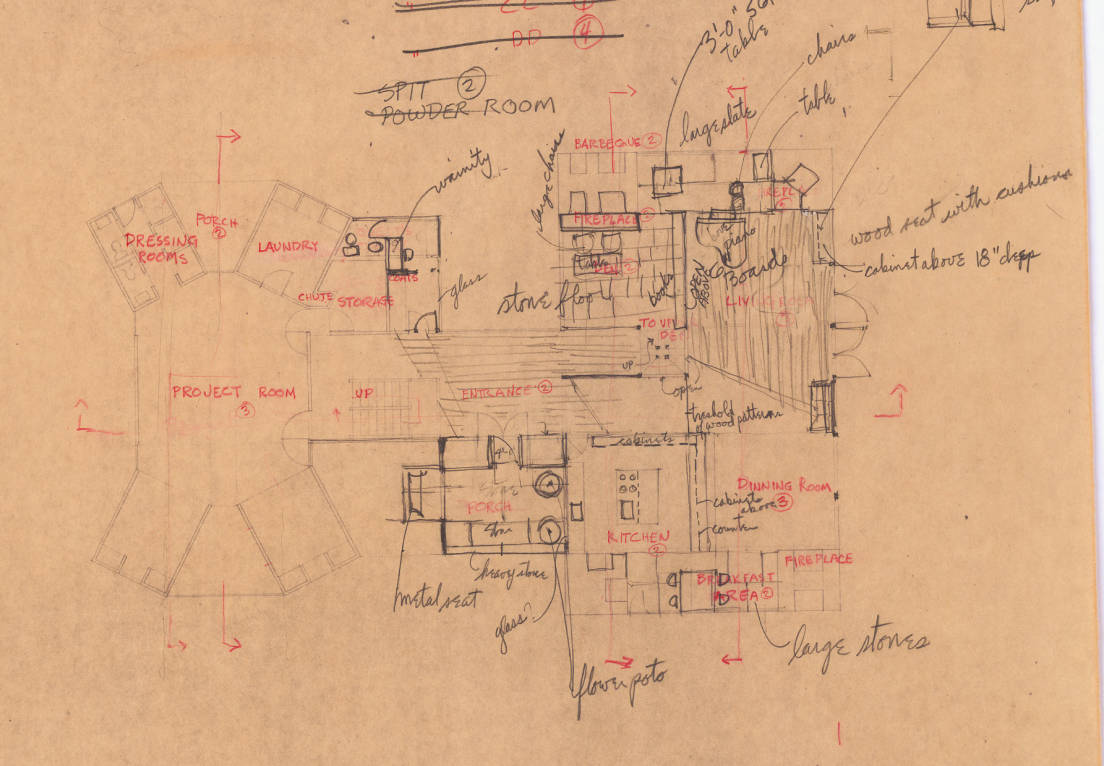
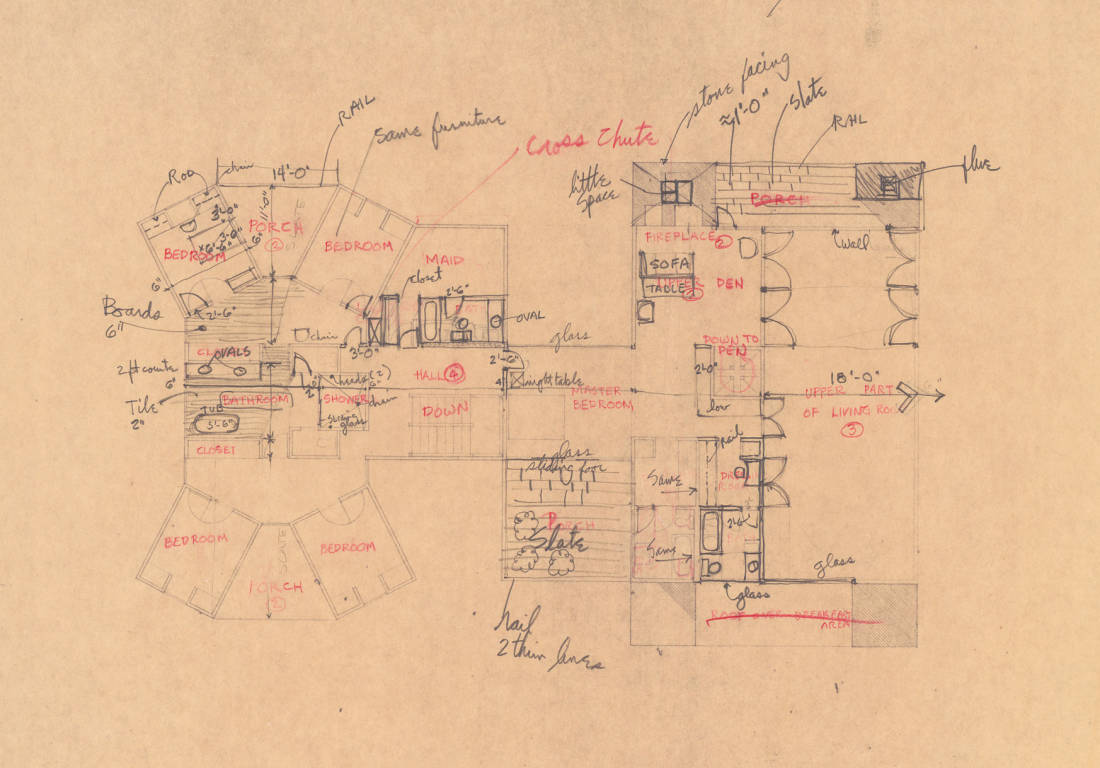
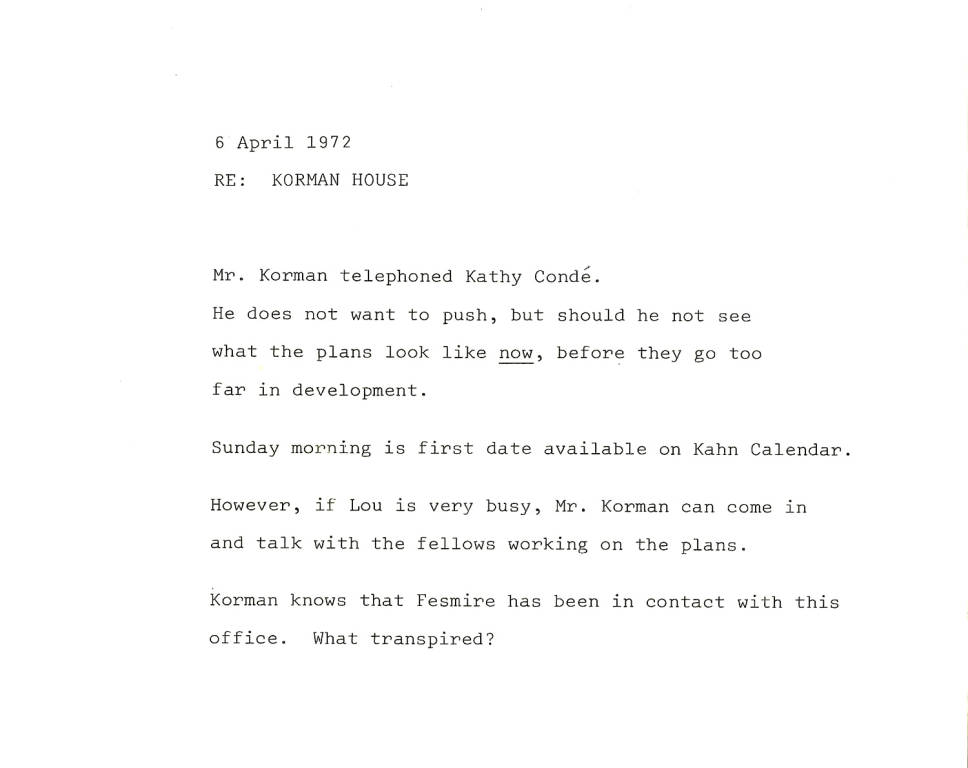
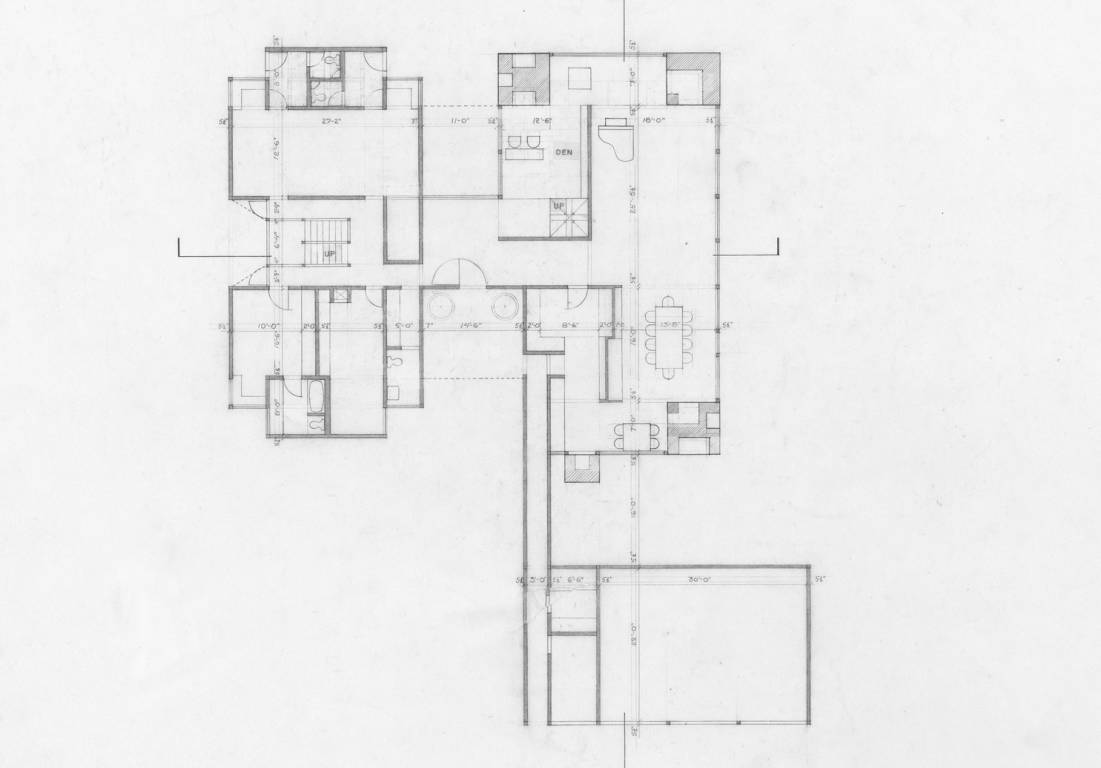
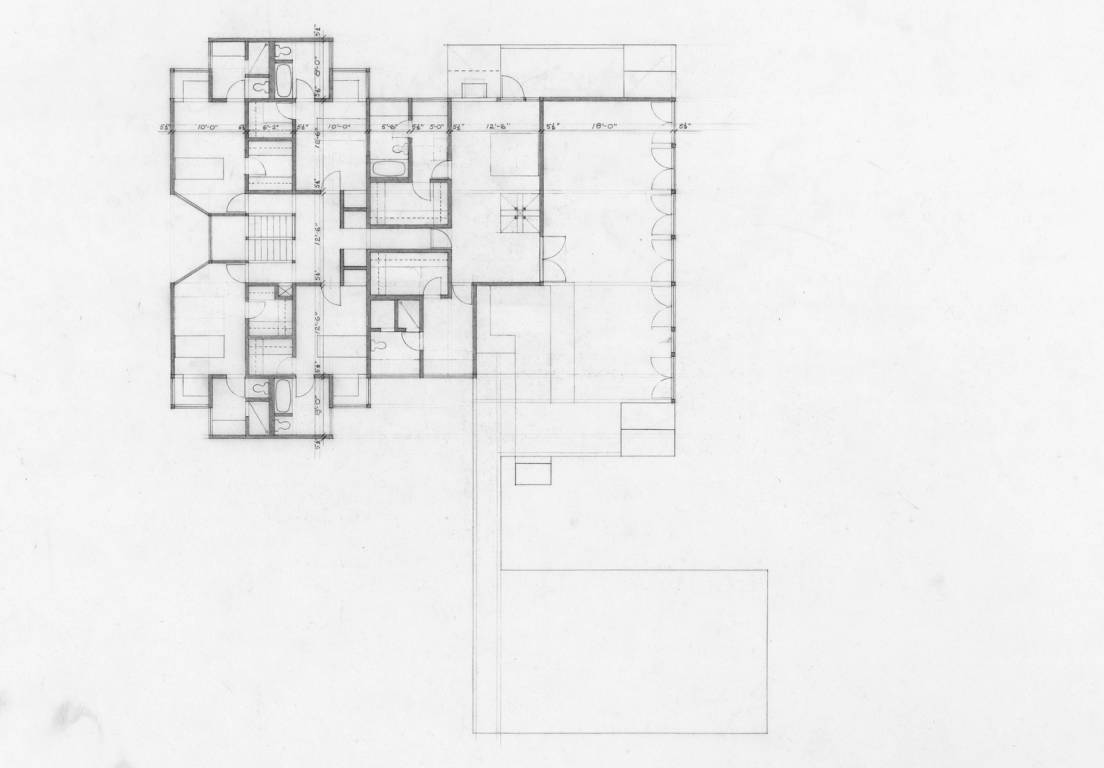
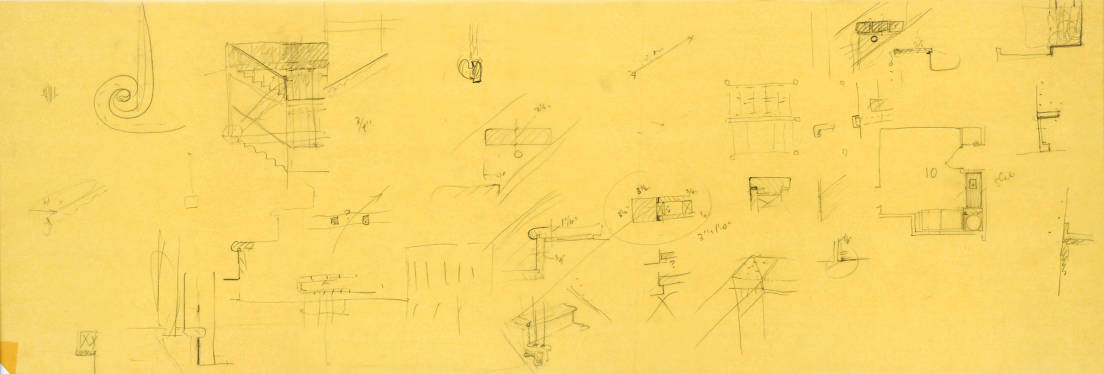
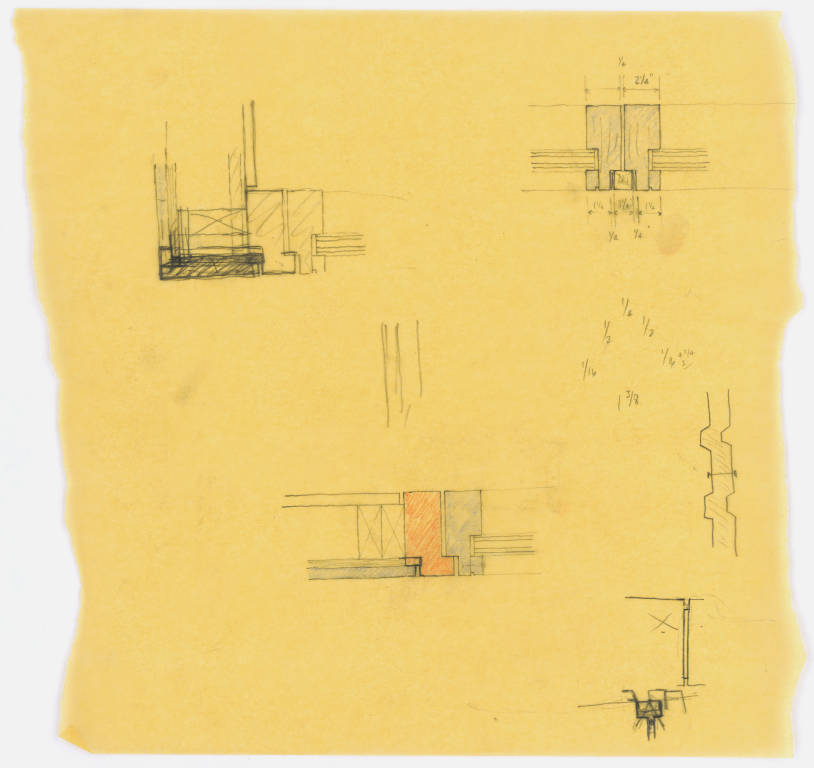
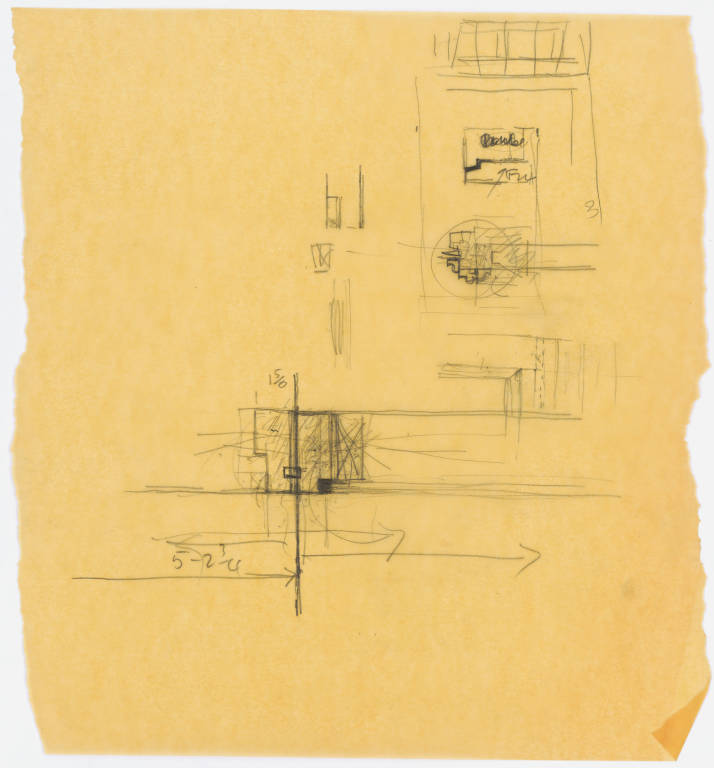
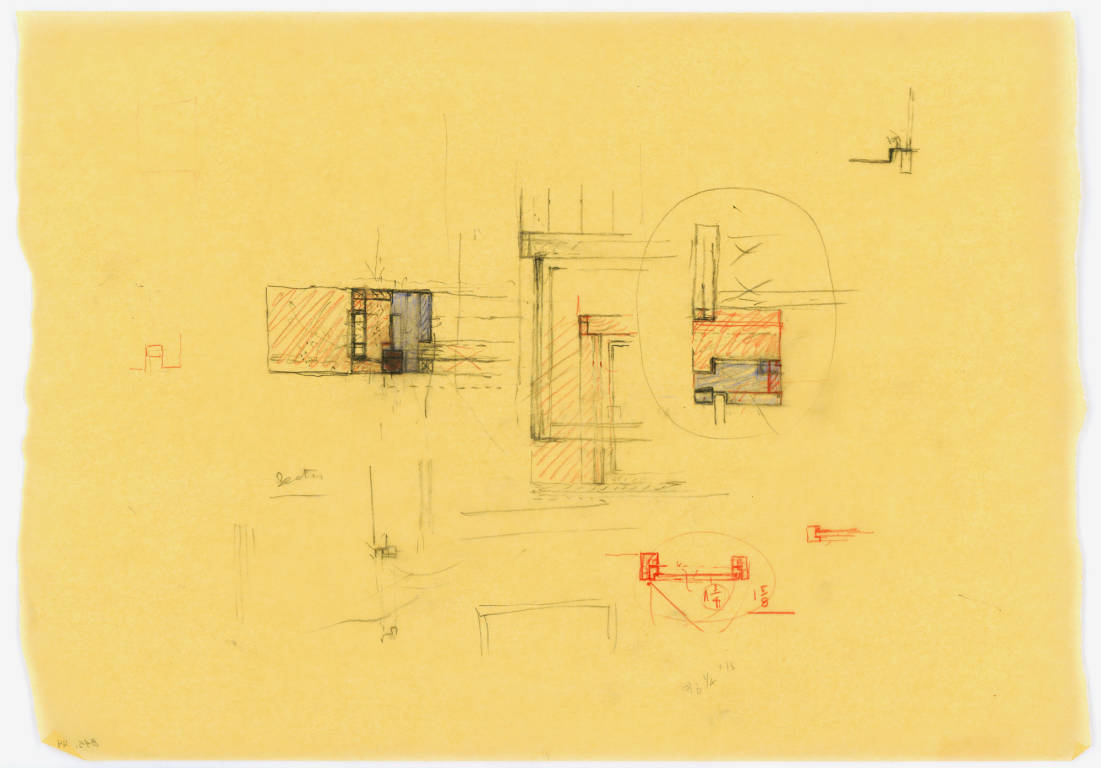
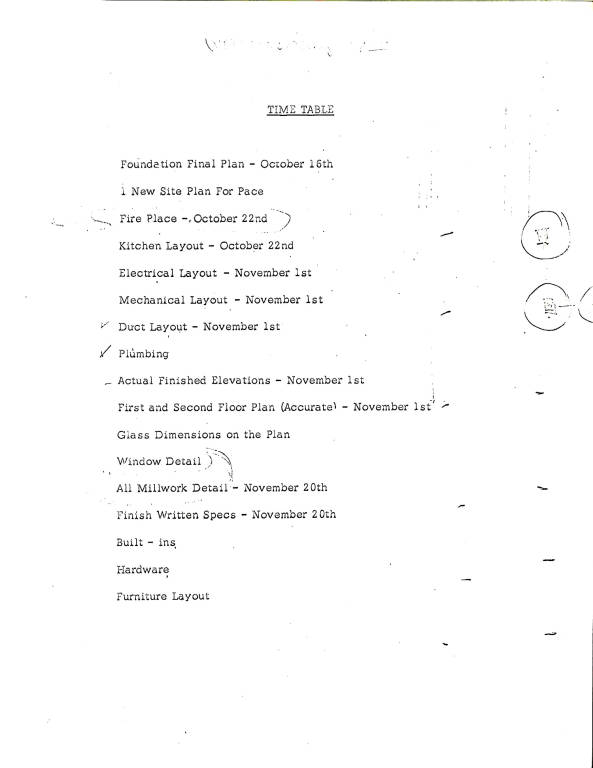
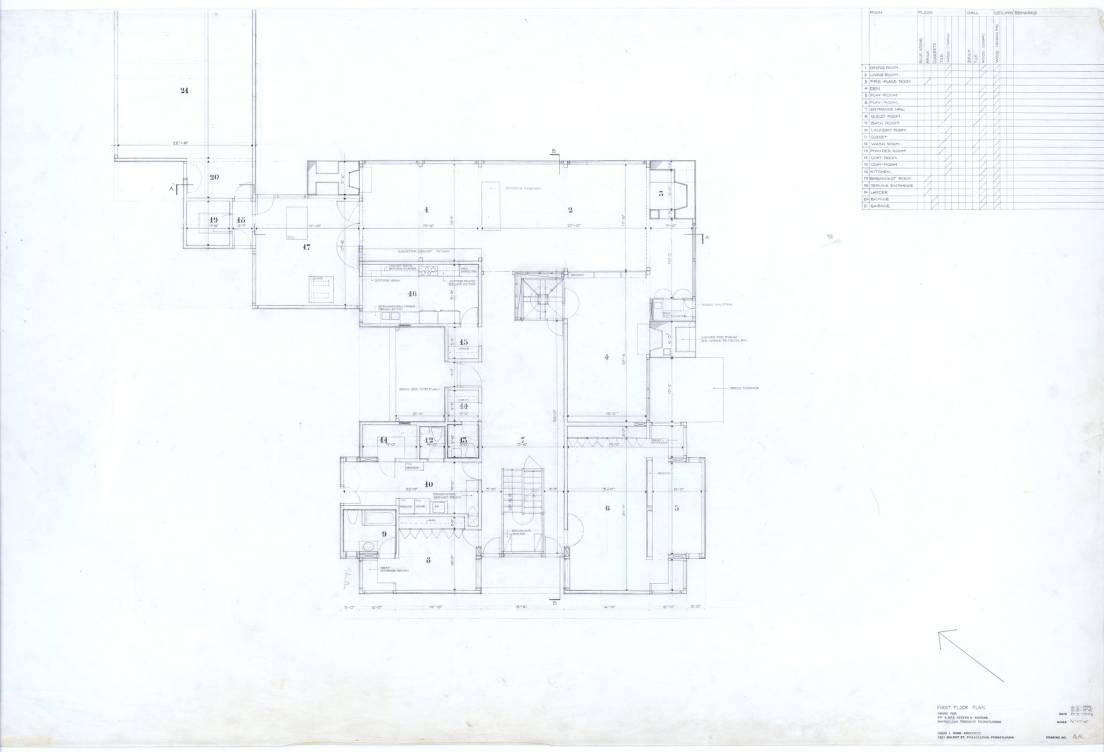
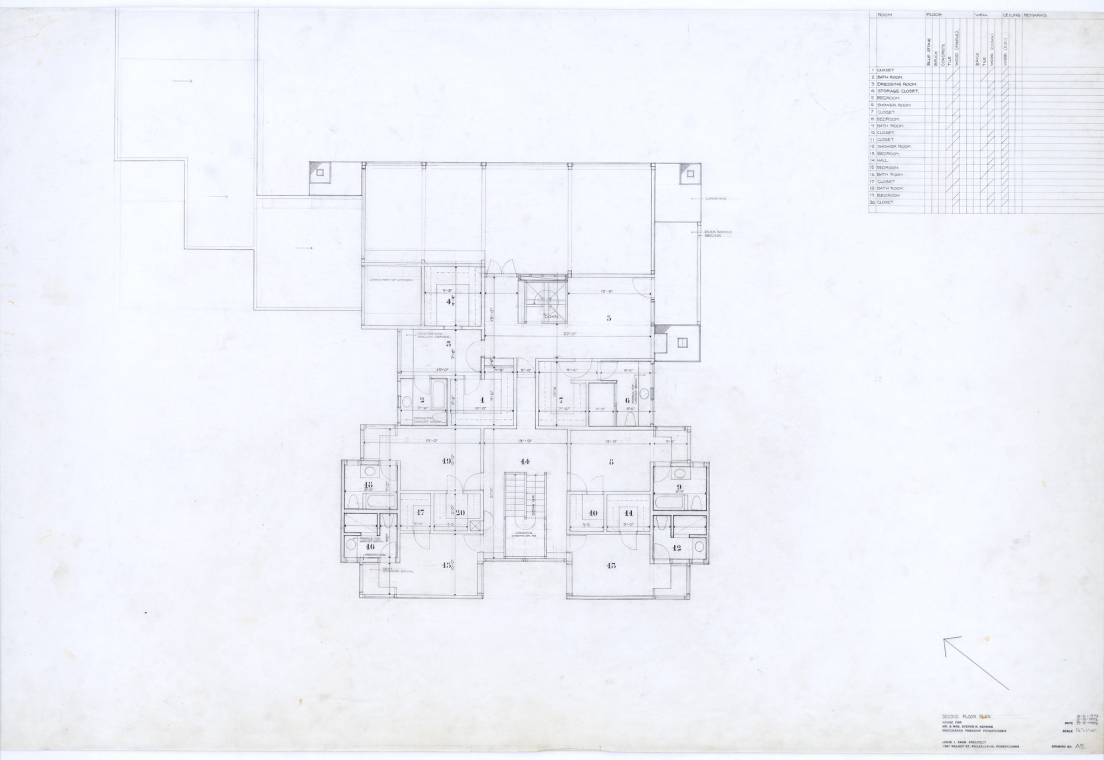
Steven Korman recalls that the design process began with a question: “How do you want to live your life?” At Kahn’s request, the Kormans sent him a four-page document outlining their lifestyle, each family member’s personality, and how they envisioned their new home.
It would need to accommodate their family of five as well as “lots of immediate family that pops in and out.” They expressed the need for “simplicity and elegance,” ample storage and an “uncluttered look, informal living.” The living room should be “glass – light – bright – cheerful.” There would be time spent together—including football games and pillow fights—but each family member should have privacy, too. Steven requested his own “hideaway” den and noted that the master bedroom area “should be separate from other bedrooms but convenient to the children.” They concluded that they wanted an “easy-to-care-for, warm, hospitable, exciting home.” One specific need stood out: Steven’s severe allergies would require an air filtration system, and challenge Kahn to find a way to make his clients feel connected to the outdoors without actually opening the windows.1 Program: “The Korman Family: A New Home,” Louis I. Kahn Collection, Architectural Archives of the University of Pennsylvania, 030.II.A.36.25
Kahn’s drafts from 1971 and 1972 show him refining his ideas, working through fundamental questions of light, siting, materials, and how shared and private spaces would relate to one another. The kitchen and breakfast room became one space, and the double-height kitchen became a single story. The living room hearth evolved from its own temple-like room to a cozy inglenook. Boys’ bedrooms first radiated outwards at angles, then morphed into a harmonious quartet converging around an open stair-hall. Kahn played with the orientation of rooms, eventually making the living space’s large windows face northeast, which drastically changed the quality of light.3 George Marcus and William Whitaker, The Houses of Louis Kahn (New Haven: Yale, 2013), p. 225. A breakthrough came when the house’s overall size was reduced by 2,000 square feet. Steven Korman recalled in a 1974 interview that this changed everything: “And all of the sudden, [Kahn said] ‘I like it. It’s a jewel.’”4Richard Saul Wurman interview with Steven and Toby Korman, 15 April 1974, tape #25, p. 5. Transcribed by the Architectural Archives of the University of Pennsylvania.
